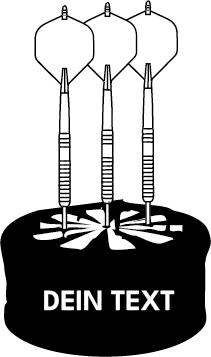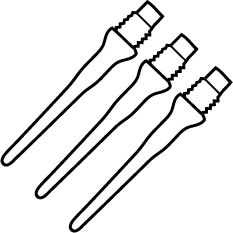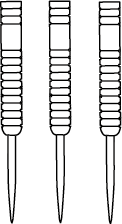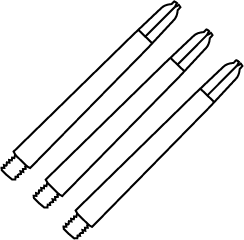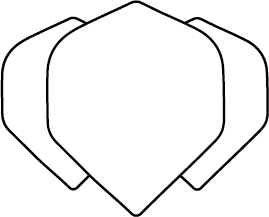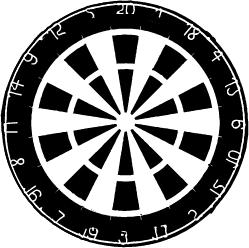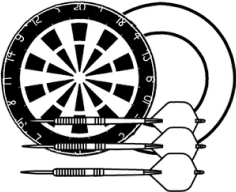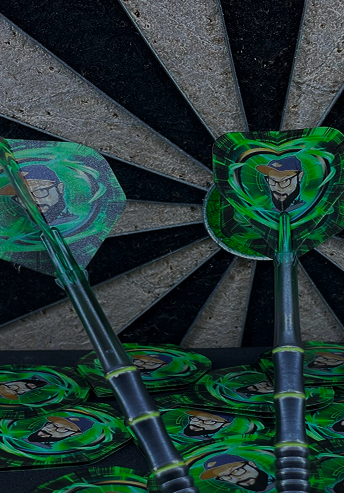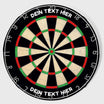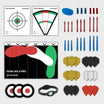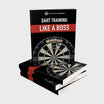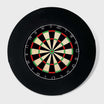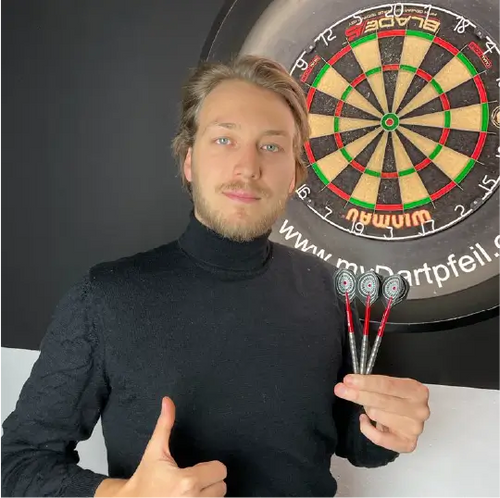Darts tournaments are springing up like mushrooms. Not only is professional darts growing without a visible end, but there are also more and more opportunities for amateurs to compete .
On the one hand, there is the possibility to register for dart tournaments in the official structures, on the other hand, more and more clubs are also organizing their own dart tournaments .
Even for amateur players , this is an opportunity to compete with others. However, dart tournament schedules regularly frustrate some organizers. For this reason, in this blog post, we offer valuable tips on what you should consider when organizing a dart tournament .
Tip 1: Dart tournament schedules – Elimination in round one does not mean elimination in the tournament
Organizers should be aware that a darts tournament schedule doesn't have much in common with tournament schedules for other sports. There are a few special features to consider.
First, let's look at a fundamental detail of a typical darts tournament schedule. Darts is usually played in a knockout format. However, those who are eliminated get a second chance .
So, in a darts tournament bracket, there's a winning side and a losing side . Even on the losing side, a player can still win the entire tournament at the end of the day.
An example: Two strong players meet in the first round. The loser then plays in the side of the bracket where all losers fall. Anyone who loses again on that side is permanently out of the tournament. However, anyone who wins everything eventually advances to the finals of the entire tournament .

Tip 2: What types of tournaments are there?
Tournament formats typically offer two options . Players compete either in singles or in doubles . Doubles tournaments often take place immediately before or the day before the singles tournament to allow players to warm up.
In terms of organization, it makes sense for people who are organizing a darts tournament for the first time to organize just one individual tournament first.
Tip 3: clearly defined upper limit of participants for dart tournament plans
To ensure the smoothest possible process, it makes sense to set a maximum number of participants. Common limits for a darts tournament are 16, 32, or 64 , for example.
But why exactly these numbers? These numbers are the best way to downplay dart tournament schedules.
Should only 29 of 32 players ultimately register, there is still an option to react accordingly. In this case, 13 matches will be played, and three byes will be awarded . Because with a total of 32 participants, 16 players would have to advance to the next round in 16 matches.
However, if only 29 participants are available, you draw 13 games and give three players a bye to the next round. This way, the basic flow isn't disrupted.

Tip 4: Which game mode makes the most sense?
For this point, we'll stick with a very classic variant, which is also favored by many organizers of official tournaments. It's usually played in a best of 3 legs, 501 , double out format.
At least, this is the requirement for the first rounds of the tournament, in which many players are still in the game. The darts tournament administration can, of course, also specify in advance that the semifinals will be played in a best-of-5 format and the final, for example, in a best-of-7 format .
Tip 5: How many dartboards are needed?
When organizing a darts tournament, it's crucial that players don't have to wait too long between games. For this reason, it's recommended that players with 16 or more participants play on at least two boards .
For 32 people , four boards should be available, while for 64 participants , six dartboards are essential.
The reason for this is simple: the time required to organize such a darts tournament is enormous. Tournaments often run from mid-morning until late in the evening. Therefore, the number of boards should definitely be secured if it's clear that the number of participants will be well over 16.

Tip 6: How long does a darts tournament usually last?
A darts tournament planner can help you roughly estimate how long a tournament will last. Once the number of players is determined, you can roughly calculate when the tournament will likely end.
- With 16 players, a tournament on two boards can be completed in about 3 hours .
- With 32 players, you should plan on at least five hours, even with four boards, due to the increased organizational effort. And even then, you'll still be well within the timeframe.
- Because as soon as the number of participants is between 32 and 64 , you can expect a tournament that starts around 12 noon to last until around 7 p.m. – if not a bit longer. Ultimately, however, this also depends on the number of boards .
Tip 7: The amount of the entry and prize money
The entry and prize money should also be fair . An entry fee of between 5 and 7 euros is mandatory. Typically, the prize money is distributed among the top three places in the rankings at a ratio of 50:30:20 .
Infobox: Often, the entire entry fee is gambled away – unless the organizer pays rent for the event space.

Tip 8: Offer additional prizes as an incentive
To provide additional incentive, some special prizes are awarded at darts tournaments. For example, the person with the most high scores , the highest finish , or the best woman in the tournament receives a special prize.
Tip 9: Software and tips for dart tournament plans
Of course, it makes little sense to write a darts tournament planner by hand. For this reason, there are various ways to do it electronically .
In our e- book, for example, you will find 8 different dart tournament planners to help you organize your next tournament quickly and easily.
A second option is the software Dartuoso , which you can download for free from the Internet.
Tip 10: What else should you consider when managing a dart tournament?
If you would like to organize a darts tournament yourself, you should at least consider a few small things:
- The physical well-being should be taken care of
- There should be enough space for spectators and players in the room
- A clear smoking policy is also essential to avoid disputes
- Warm up like a pro before darts : You'll find tried-and-tested tips and exercises only here. Click in now and warm up!
- Broken dart tip ? Find quick help here. Including helpful tips and step-by-step instructions. Click here to find out more!
Sofern nicht anders angegeben, unterliegt das im Beitrag gezeigte Bildmaterial mit Bezug zu Dartspielern und verwandten Themen dem Copyright der Professional Darts Corporation (© PDC).

